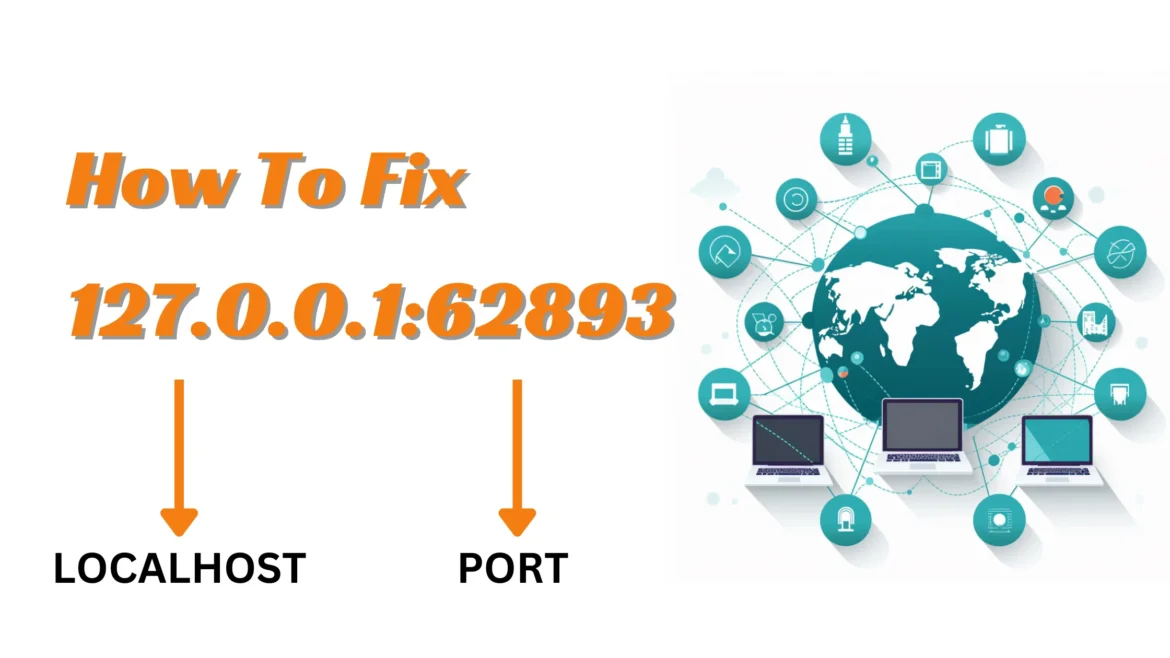
Introduction
In the realm of networking, 127.0.0.1:62893 is a commonly used IP address, often referred to as “localhost.” It represents the loopback interface, which is used by a computer to communicate with itself. This special address is reserved for testing and development purposes, allowing developers to simulate a network environment on a single machine without requiring an external network connection. Essentially, 127.0.0.1:62893 enables a system to send data to itself, a critical feature in many web applications, network diagnostics, and software testing.
The Significance of 127.0.0.1:62893 in Networking
The IP address 127.0.0.1:62893 is part of a broader range of loopback addresses that range from 127.0.0.0 to 127.255.255.255. However, 127.0.0.1 is the most commonly used, recognized as the standard for localhost. In networking terms, localhost is a hostname that points to the computer itself, enabling local communication without going through external routers or switches. This is particularly useful for software testing, as developers can create, run, and test web servers, databases, and other networked services entirely on their local machine.
The Role of Ports in Network Communication
Every device connected to a network uses ports to differentiate between multiple services running on the same IP address. A port number like 127.0.0.1:62893 is a logical construct that allows a computer to identify a specific process or service. In a typical scenario, a web server may use port 80 or 443 for HTTP or HTTPS traffic, but developers can use any port number for their own services or applications during testing.
How 127.0.0.1:62893 Is Used in Web Development
 In web development, the combination of 127.0.0.1:62893 with a custom port, such as 62893, is commonly seen when developers are testing web applications locally before deploying them to a live server. For example, a developer might run a local instance of a web server, such as Apache, Nginx, or Node.js, on port 62893. By accessing 127.0.0.1:62893 in a browser, the developer can interact with the locally hosted website as if it were live on the internet, even though it’s confined to the local machine.
In web development, the combination of 127.0.0.1:62893 with a custom port, such as 62893, is commonly seen when developers are testing web applications locally before deploying them to a live server. For example, a developer might run a local instance of a web server, such as Apache, Nginx, or Node.js, on port 62893. By accessing 127.0.0.1:62893 in a browser, the developer can interact with the locally hosted website as if it were live on the internet, even though it’s confined to the local machine.
The Importance of Port Management
While ports are essential for running multiple services on the same machine, they also introduce potential security risks if not managed properly. Exposing services on specific ports can make them vulnerable to attacks, especially if those services are not properly secured. For this reason, developers and system administrators must carefully manage which ports are open and which services are accessible via 127.0.0.1:62893 or a broader network interface. In more advanced development environments, 127.0.0.1:62893 may be used in conjunction with virtual machines (VMs), containers, or even remote development tools.
The Role of Loopback in Development and Testing
The loopback interface, represented by 127.0.0.1:62893 is critical for developers during the software development lifecycle. It allows them to simulate a full network environment on a single machine, eliminating the need for external servers or network configurations. Whether testing APIs, databases, or full web applications, using 127.0.0.1:62893 facilitates safe and isolated testing environments. This flexibility ensures that developers can create and debug applications efficiently without risking exposure to the broader internet or network-related vulnerabilities.
Practical Security Benefits of Using 127.0.0.1:62893
Using 127.0.0.1:62893 for local development provides a key security advantage: the services are not exposed to the outside world. Since the loopback interface only permits traffic within the local machine, no external devices or users can access services running on This feature is particularly useful during the early stages of development or when working on sensitive systems, as it minimizes the attack surface and reduces the chances of unauthorized access or malicious activity from external networks.
Avoiding Common Pitfalls with Port Numbers
While custom port numbers like 127.0.0.1:62893 allow multiple services to run concurrently on a single machine, mismanagement of ports can cause conflicts or vulnerabilities. For example, if a port is already in use by another service, the new service may fail to start or operate correctly. Developers must ensure that each service runs on a unique, properly configured port to prevent these conflicts. Additionally, managing firewall rules and access control lists (ACLs) is essential to avoid exposing critical services to unwanted traffic.
Containerization and Port Configuration
In containerized environments, such as those managed by Docker, the use of 127.0.0.1:62893 and ports like is vital for exposing services to the host machine. Docker allows containers to run isolated services, but by mapping the container’s internal ports to the host’s 127.0.0.1 and specific ports, these services become accessible from the host machine. Developers can interact with these containers through local addresses, enabling complex applications to be built and tested across different containers without external network dependencies.
Debugging Tools and Localhost
Tools like Postman, curl, and browser-based developer tools are often used in conjunction with to test APIs and web applications. Developers can run requests through 127.0.0.1:62893 to see real-time responses, simulate user interactions, or diagnose issues in real-time. These tools are essential for pinpointing errors and ensuring that local services are functioning correctly before they’re deployed in production environments. This iterative testing cycle helps eliminate bugs early in the development phase.
Scaling Up From Localhost to Production
When moving from localhost to a production environment, transitioning from 127.0.0.1:62893 to public-facing IP addresses is a critical step. While is reserved for local use, in production, services will need to be configured to listen on a public IP, allowing users to access the application. However, the lessons learned from testing on such as managing port numbers and ensuring service isolation—play a critical role in ensuring smooth deployment to production.
Security Considerations for 127.0.0.1:62893
While is typically isolated from external access, developers must remain mindful of security, especially when transitioning from local development to production environments. Although services running on 127.0.0.1:62893 are not exposed to the broader internet, they are still accessible within the local system. This means that any malicious software or compromised processes on the same machine could potentially exploit the service if proper safeguards aren’t in place.
Conclusion
127.0.0.1:62893 and custom ports like 62893 is a powerful tool for developers, system administrators, and network engineers. By providing a flexible, secure, and isolated environment for testing and development, 127.0.0.1:62893 enables professionals to build, test, and troubleshoot services and applications with confidence. Whether working with web servers, databases, APIs, or containerized environments, understanding how to leverage localhost and ports effectively is key to successful networking and software development.
You May Also Read: Instanavigation


